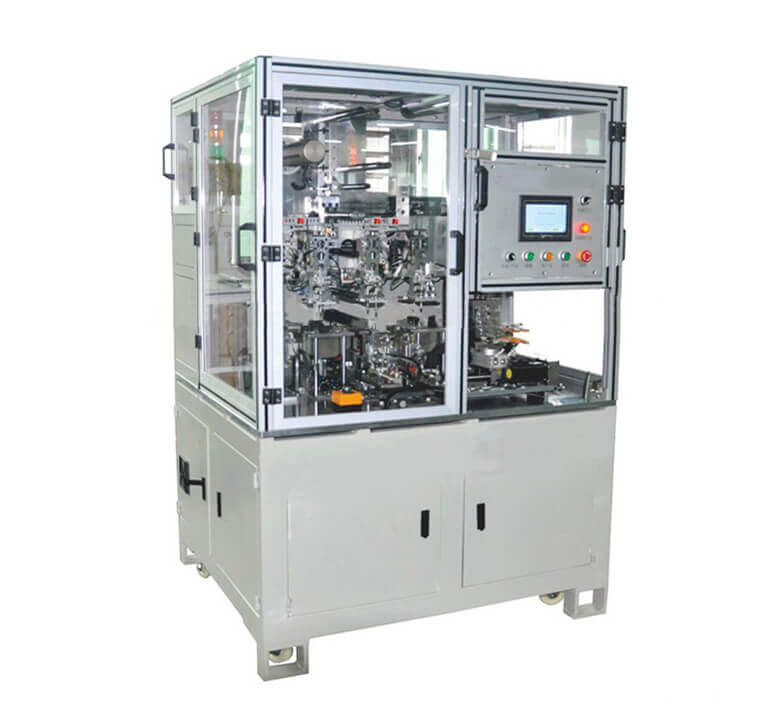Site de Blog
Linha de Máquinas de Fabricação de Células Cilíndricas Automáticas
fabricação e equipamento de laboratórios de bateria li-ion 18650
fluxograma de célula de moeda de íon de lítio e lista de máquinas
fabricação e equipamento de laboratórios de baterias com bateria de íon de lítio
dez 2016 aceitação de fábrica do cliente nos EUA da máquina de empilhamento automático
Contate-nos
- Se você tiver dúvidas, entre em contato conosco, todas as perguntas serão respondidas
- Email : David@tmaxcn.com
- Email : Davidtmaxcn@gmail.com
- Adicionar : No. 39, Xinchang Road, Xinyang, Haicang Dist., Xiamen, Fujian, China (Mainland)
produtos quentes
Advancing Battery Technology: The Prismatic Cell Pilot Line
Introduction:
In the rapidly evolving landscape of electric vehicles and renewable energy storage, battery technology plays a crucial role. One innovative solution that has gained traction is the Prismatic cell—a lithium-ion battery with a distinctive square or rectangular shape, setting it apart from traditional cylindrical cells. This blog post explores the Prismatic Cell Pilot Line, highlighting its significance in advancing battery technology.
Advantages of Prismatic Cells:
Prismatic cells offer several advantages over their cylindrical counterparts. Their square or rectangular design enables more efficient utilization of packaging space, resulting in higher energy density and power density. Moreover, the design of Prismatic cells facilitates easier integration and assembly, while enhancing safety features.
Applications of Prismatic Cells:
The versatility of Prismatic cells extends across various industries. They find widespread use in electric vehicles, e-bikes, portable electronic devices, and renewable energy storage systems. For instance, electric car manufacturers benefit from the space optimization and improved energy efficiency offered by Prismatic cells. These cells also enable compact designs in portable electronics, enhancing user convenience.
Significance and Objectives of the Prismatic Cell Pilot Line:
The Prismatic Cell Pilot Line serves as an experimental production line dedicated to developing and testing novel Prismatic battery technologies. Its primary objectives include assessing the feasibility of new technologies, optimizing production processes, and preparing for commercial-scale manufacturing. The pilot line allows researchers and engineers to validate innovative ideas, ensuring their readiness for market adoption.
Workflow of the Prismatic Cell Pilot Line:
The Prismatic Cell Pilot Line follows a well-defined workflow. It begins with the selection of suitable raw materials, by battery component preparation, assembly, and testing. Each step involves specific techniques and protocols to ensure the production of high-quality Prismatic cells. Rigorous testing and quality control measures are implemented to validate the performance and safety aspects of the batteries.
Here is a simplified list of equipment commonly used in a Prismatic cell pilot line:
- 1.Mixing and Coating Equipment
- 2.Electrode Slitting Machines
- 3.Electrode Stacking Machines
- 4.Calenders or Roll Presses
- 5.Prismatic Cell Assembly Machines
- 6.Tab Welding Machines
- 7.Cell Sealing Equipment
- 8.Battery Testers
- 9.Thermal Chambers
- 10.Safety Testing Equipment
- 11.Formation Chambers
- 12.Aging Cabinets
- 13.Fire Detection and Suppression Systems
- 14.Environmental Control Systems
- 15.Battery Management Systems (BMS)
- 16.Data Acquisition Systems
- 17.Manufacturing Execution Systems (MES)
The future of the Prismatic Cell Pilot Line holds tremendous promise. Continued research and development efforts are anticipated to yield technological breakthroughs and improvements in Prismatic battery technology. As a result, Prismatic cells are expected to play a vital role in revolutionizing electric transportation and energy storage systems. Furthermore, these advancements in battery technology align with environmental sustainability goals, promoting cleaner and greener solutions for a better tomorrow.
Conclusion:
The Prismatic Cell Pilot Line represents a significant step forward in advancing battery technology. Its dedication to exploring and refining Prismatic battery technologies ensures the continued progress of electric vehicles and renewable energy storage systems. With the potential to deliver higher energy density, improved safety, and enhanced integration capabilities, Prismatic cells are poised to shape a sustainable and electrified future.

 ru
ru English
English










 +86 13174506016
+86 13174506016 David@tmaxcn.com
David@tmaxcn.com

